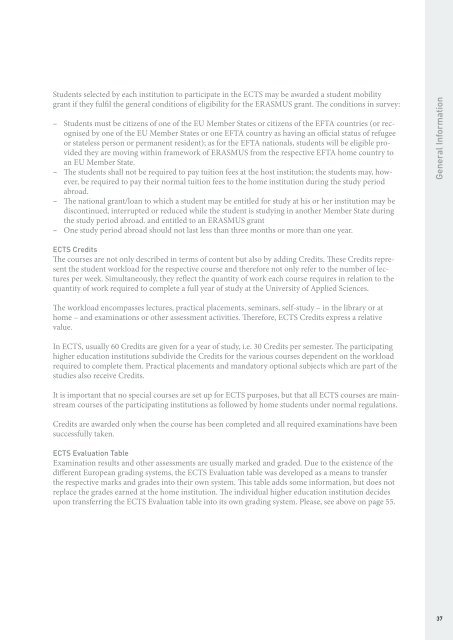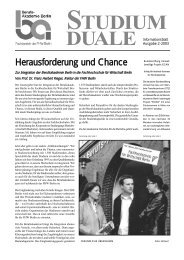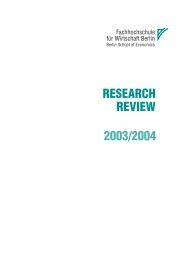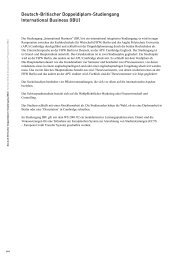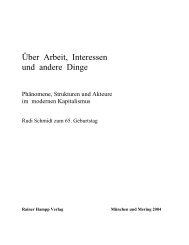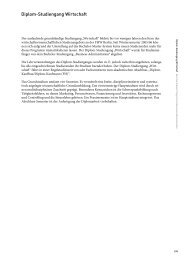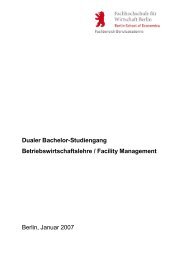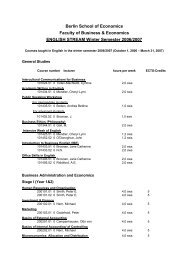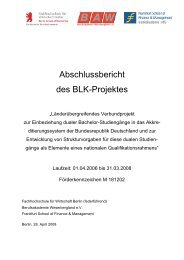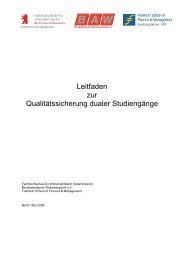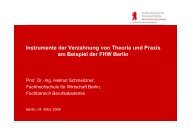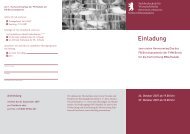European Credit Transfer System 2007 / 2008
European Credit Transfer System 2007 / 2008
European Credit Transfer System 2007 / 2008
Create successful ePaper yourself
Turn your PDF publications into a flip-book with our unique Google optimized e-Paper software.
Students selected by each institution to participate in the ECTS may be awarded a student mobility<br />
grant if they fulfil the general conditions of eligibility for the ERASMUS grant. The conditions in survey:<br />
– Students must be citizens of one of the EU Member States or citizens of the EFTA countries (or recognised<br />
by one of the EU Member States or one EFTA country as having an official status of refugee<br />
or stateless person or permanent resident); as for the EFTA nationals, students will be eligible provided<br />
they are moving within framework of ERASMUS from the respective EFTA home country to<br />
an EU Member State.<br />
– The students shall not be required to pay tuition fees at the host institution; the students may, however,<br />
be required to pay their normal tuition fees to the home institution during the study period<br />
abroad.<br />
– The national grant/loan to which a student may be entitled for study at his or her institution may be<br />
discontinued, interrupted or reduced while the student is studying in another Member State during<br />
the study period abroad. and entitled to an ERASMUS grant<br />
– One study period abroad should not last less than three months or more than one year.<br />
ECTS <strong>Credit</strong>s<br />
The courses are not only described in terms of content but also by adding <strong>Credit</strong>s. These <strong>Credit</strong>s represent<br />
the student workload for the respective course and therefore not only refer to the number of lectures<br />
per week. Simultaneously, they reflect the quantity of work each course requires in relation to the<br />
quantity of work required to complete a full year of study at the University of Applied Sciences.<br />
The workload encompasses lectures, practical placements, seminars, self-study – in the library or at<br />
home – and examinations or other assessment activities. Therefore, ECTS <strong>Credit</strong>s express a relative<br />
value.<br />
In ECTS, usually 60 <strong>Credit</strong>s are given for a year of study, i.e. 30 <strong>Credit</strong>s per semester. The participating<br />
higher education institutions subdivide the <strong>Credit</strong>s for the various courses dependent on the workload<br />
required to complete them. Practical placements and mandatory optional subjects which are part of the<br />
studies also receive <strong>Credit</strong>s.<br />
It is important that no special courses are set up for ECTS purposes, but that all ECTS courses are mainstream<br />
courses of the participating institutions as followed by home students under normal regulations.<br />
<strong>Credit</strong>s are awarded only when the course has been completed and all required examinations have been<br />
successfully taken.<br />
ECTS Evaluation Table<br />
Examination results and other assessments are usually marked and graded. Due to the existence of the<br />
different <strong>European</strong> grading systems, the ECTS Evaluation table was developed as a means to transfer<br />
the respective marks and grades into their own system. This table adds some information, but does not<br />
replace the grades earned at the home institution. The individual higher education institution decides<br />
upon transferring the ECTS Evaluation table into its own grading system. Please, see above on page 55.<br />
General Information<br />
37


